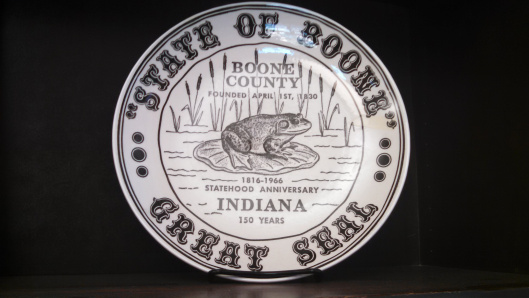Tag: history
Buy My Books
*All books sold on my webpage are signed and include shipping, handling and any applicable sales tax.
*To keep costs low, I don’t use a fancied-up PayPal account–just a very basic version. Be sure to choose the right “price version” as you shop.
*Single books ordered are sold at their marked retail price.
*Order from the Mix-or-Match (more than one book) option, and pay the lower price per title.
Boone County, Images of America $21.99 Mix-or-Match $17.50 (Save $4.49 on this title)
Boone County is an image laden, “History in Hand” book containing 200+ old photos with captions. Published in 2016 by Arcadia Publishing to coincide with Indiana’s Bicentennial Celebration
 Single Copy 21.99
Single Copy 21.99
 Mix-or-Match 2 or more books 17.50
Mix-or-Match 2 or more books 17.50
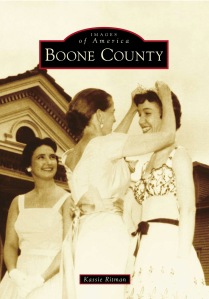
Mix-or-Match any 2 or More $17.50
The State of Boone $18.99 Mix-or-Match $15.50 (Save $3.49 on this one)
The State of Boone is 150 pages of stories, facts, and explorations of people, places and events that molded a frog infested swampland into the lovely place we call home. This is the storyteller’s version of Boone County
 Single Book 18.99
Single Book 18.99
 Any 2 or More books (Mix-or-Match) 15.50
Any 2 or More books (Mix-or-Match) 15.50
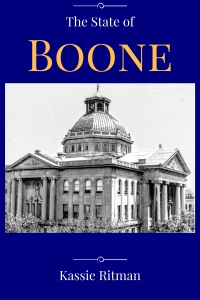
Mix-or-Match price $15.50 when you buy any 2 or More
*If you have any questions, or want custom-signed or unsigned copies, please email me at Kassie at Writing With Mom dot Com
Sorry: I’m not set up to ship outside the 48 states or to deliver eBooks. Please see Amazon or Barnes & Noble for out of country orders– or your favorite eTailer for electronic versions (Kindle, Nook, Kobo, or iTunes).
The Short-Lived Trade of Embalming Surgeons
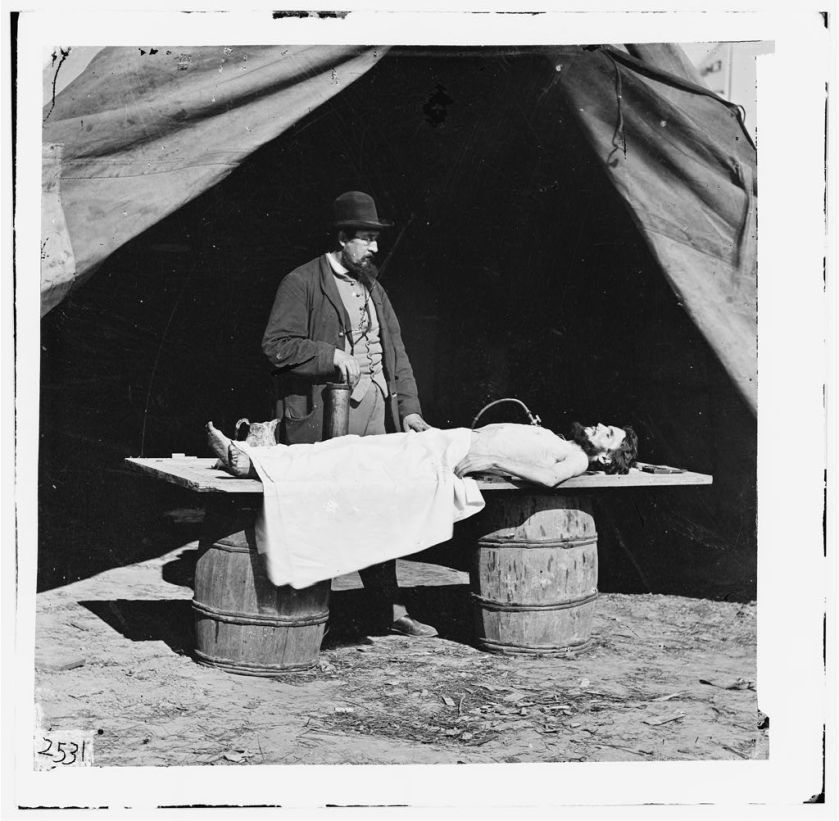
Most of the United States was still a wide open wilderness when the Great War between the states broke out. Young men who knew little about life beyond the borders of their own farm’s fence rail were suddenly far from home and doing what was previously unthinkable.
While some boys came home with doctoring skills, others brought home the lucrative specialty title “Embalming Surgeon.” Those who were willing to abandon their post (and could stomach it) were hired away from the armies of both sides by the booming embalming service businesses.
Field embalming could be completed in about two hours, with a minimal investment in chemicals. These gruesome entrepreneurs followed behind active battles with their tents and supplies. They employed men as “pickers” to glean blood soaked fields in search of freshly dead and mostly intact men.
“Runners” were used to contact the agents whose territory included the deadmen’s hometown. With such a streamlined system in place, the embalmer’s agents often delivered the grievous news before the official Army telegrams were dispatched. No time was wasted in the rush to sell devastated loved ones services for preservation and shipping of their soldier’s remains.
By railroad rules, only embalmed corpses would be accepted for transport. No spoiled (foul smelling) cargo of any kind was allowed. At the beginning of the great conflict between the states, bodies were packed and crated in straw and ice. However, as the war continued, delays and detours became common, and iced corpses could putrefy beside other cargo before reaching home.
When Pickers ran out onto a new battlefield, officers’ remains were favored over enlisted men. Their families were likely to be wealthier. With fees around $50 for an officer, and $25 for an enlisted man ($2500 and $1250 in today’s money) there were fortunes to be made. The service’s price included packing the remains in crudely made wood transport coffins lined with zinc against leakage.
Of course there were some Agents who were just plain cheats. These swindlers set a price upon seeing the dead soldier’s home; sometimes demanding outrageous fees at large homes with the threat of discarding the body; effectively ransoming the corpse to loved ones.
After President Lincoln’s body made its fourteen day farewell tour by train, the public in all parts of the country embraced the previously rare practice of routine embalming. Still, the market for Embalming Surgeons quickly evaporated. Undertakers at home were already set up with profitable furniture and coffin making shops. They had digging crews and fancied-up funeral hacks called “hearses” to tote the departed in.
For hometown undertakers, adding this service was an easy moneymaker. Some Embalming Surgeons found work with established undertakers; most turned to farming or whatever trade they’d left off with before the war.
Can’t find an old photo of an event relevant to your Family History? Check out the Library of Congress Image Collection. You can search by collection, events, or key words. In most cases, usage availability is noted. A few will suggest a search before using the image for publication or display (like on a blog or publication). Their cache of available photos and other forms of imagery is incredible–make it a part of your writing and researching toolbox!
It’s Interview Time for Mom!
Being interviewed by your old hometown newspaper sure feels like a big deal. Both “Boone County, Images of America” and “The State of Boone” release next month. I sat down last week with Elizabeth Pearl of The Lebanon Reporter at the “Tornado Starbucks” for a chat. Here’s the article she wrote from our 30 minute convo–clearly I yack as verbosely as I write
When Kassie Ritman was a senior in high school, she and a group of friends decided to sneak out one night and paint graffiti on the Lebanon water tower.
The girls asked a group of guys to come climb the ladder and paint “79” — their graduating year — over the “Friendly City” logo emblazoned across the water tank.
But the guys never showed up, so around one in the morning Ritman and her friends gave up and went home.
Years later, while researching a forthcoming book about Boone County, Ritman learned a disturbing truth about the land the water tower stood over. Beneath the grass and soil lay the unmarked graves of Lebanon’s earliest citizens.
“We had no idea,” Ritman said, “but we were standing over a thousand of bodies.”
Ritman was born at Witham Hospital in 1960, and grew up in what she calls “the last house in Boone County” before the Hendricks County line. She attended Lebanon schools and was a 4-H member. Until she started working on the book, titled “Boone County,” she thought she knew all the legends about the area.
She quickly found out that she was wrong.
“I would challenge anyone to see if some of the things in there don’t surprise them,” Ritman said. “Because a lot of it threw me for a loop.”
Ritman has lived in Indianapolis for most of her adult life, but she still comes to Boone County for the annual fair, and to get her hair cut by a high school classmate. She feels a strong bond with the place where she was raised and where she still has many friends, she said.
So when the opportunity came to write a book about the area, she leapt at the chance. Ritman, who worked as an interior decorator and owned a coffee shop in Broad Ripple, has always loved to write and explore family history and genealogy. Last year she approached Arcadia Publishing about a historic house in Indianapolis.
The publisher said no, but told Ritman about a few other projects they needed someone to work on. Ritman quickly agreed when they mentioned her home county.
“I told them I grew up in Boone, and I’d love to do it,” she said.
The book, which will be released Aug. 15, is part of the ubiquitous “Images in America” series, which publishes works on small towns and special topics across the country. Until now, the series includes 117 books on Indiana, none of which covered Boone County or any of the towns within it.
Ritman began working on the book, which will be largely pictorial, in September. Over the course of her research she visited the Heritage centers and libraries in Lebanon, Thorntown and Jamestown and spoke with longtime area families who knew the legends and had photos of the county.
“This has been several months in the works,” said Phyllis Myers, genealogy and local history librarian at the Thorntown Public Library. “We went through all the photos we have and the written documents in the library. A lot of that stuff has not been included in a book before or anything like this.”
The book includes more than 200 photos and covers the years 1840 to the 1980s, Ritman said. In it, people can find information on many facets of life in Boone, including details about famous and interesting graves and the history of medical care in the county. One early hospital shown in the book refused to treat “the insane or contagious.”

The story behind the lost cemetery beneath the water tower is also included in the book. The cemetery, called Cedar Hill, was opened in the 1830s. By the end of the Civil War, it was overflowing and unkempt, and eventually abandoned after the opening of Oak Hill Cemetery in 1872.
In 1954, the James Hill chapter of the Daughters of the American Revolution took over the cemetery and removed the grave markers, most of which were broken, lost or illegible. The gravestones were available for the public to take, and those unclaimed were taken to the dump. By most accounts, 1,000 of Boone County’s earliest residents were buried in the old cemetery, Ritman said.
Ritman’s book — which she is publishing with a companion piece, “State of Boone,” that focuses on stories rather than photos — comes at a good time for the county, said Eric Spall, local history specialist at the Lebanon Public Library’s Heritage Center. The last book about the county was published in 1984.
“We told her it was definitely time for a history book,” Spall, who helped Ritman with the library’s vast archives, said. “There should be a lot of interest in the county on history of this type, with that local flavor. You won’t find the more detailed stuff on people’s lives in histories of the whole state.”
One of the things Ritman enjoyed about researching Boone was the amount of unique information and people to come out of it. She herself grew up surrounded by that history, and most of the time didn’t know she was surrounded by it. As a child, she remembers finding Native American arrowheads in fields and showing them to her friends.
“We traded arrowheads like town kids traded marbles,” she said. “We had no idea these were from 5,000 years before Christ.”
For Ritman, part of the fun of writing a book like this is that she gets to learn about the place where she was born, and in the process hopefully teach current residents about their home. The book is on-order at the Thorntown and Lebanon libraries, and Ritman said it will likely be available other places around the county as well. She plans to do signings and events around the county a few weeks after the book is released.
“This is such a unique place. People from Lebanon are different from people from Zionsville, who are different than people from Jamestown,” she said. “To play on what Vonnegut said, everywhere you go there is a Hoosier doing something. It’s the same for Boone County. Everywhere you go there is a someone from Boone County doing something, usually something really cool.”
How to buy it
The book “Boone County” is available at amazon.com and http://www.barnesandnoble.com/.
Heraldry and We the People, Return from Spring Break
I originally wrote this post several years ago while the “Mom blog” was in its infancy. But after watching a good friend pridefully chose “just the right spot” to display her new, official and authentic family crest– complete with expensive frame and mat–freshly purchased while visiting a Theme-Park-Mega-Land…I thought we could all use a refresher. We Americans just don’t “get” the whole Heraldry and Flying the Family Colors thing. But boy, we sure want to participate! Here’s the real scoop, along with a bit of my own shame showing 😉 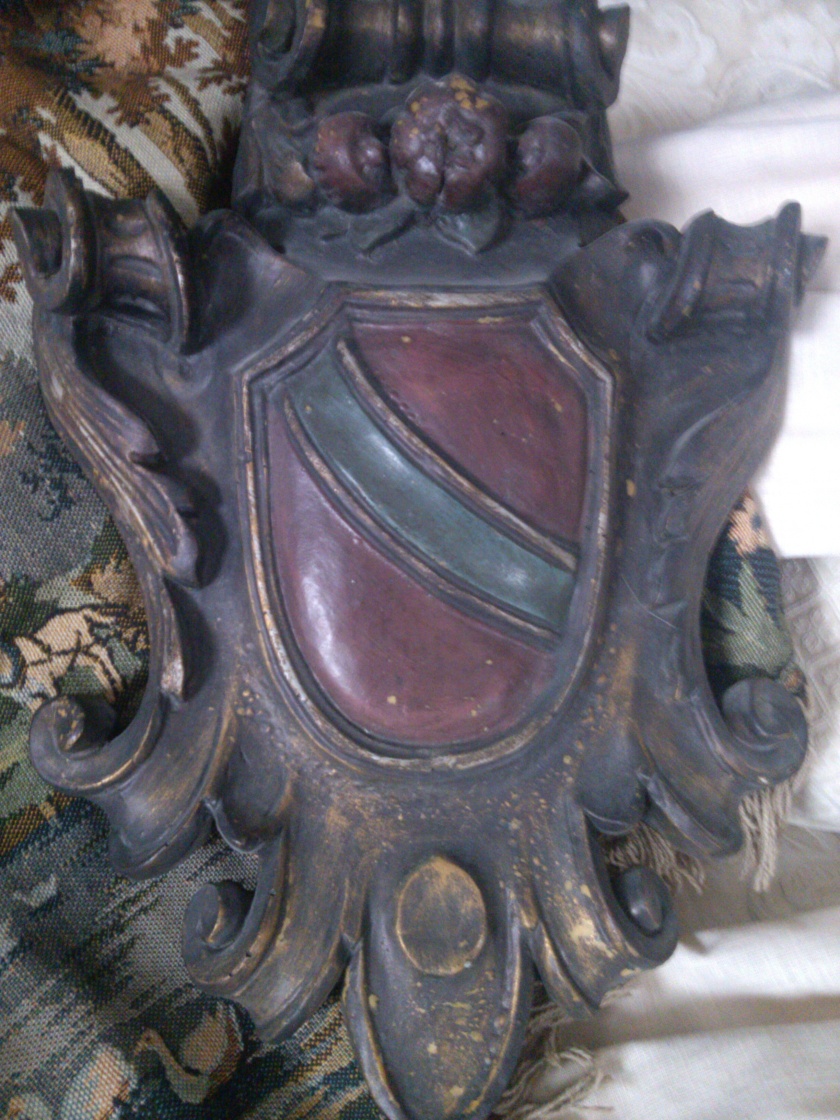 I’m not sure, but I believe it was PT Barnum who said “There’s a sucker born every minute.”
I’m not sure, but I believe it was PT Barnum who said “There’s a sucker born every minute.”
What I am sure of is: I am one of those suckers.
The other day I was clearing out a drawer and ran across a family crest certificate that my husband and I had purchased many years ago. Can you hear the Merry-go-Round music yet? It came from a very “proper” looking shop. I believe that it was even spelled “shoppe” ~ a spelling meant to further endorse the authenticity of fake stuff. But we were young and silly and newly married. So we scraped together the $35.00 ( a pretty Royal sum for us 30+ years ago) and bought a “fully researched and authenticated, heirloom quality” piece of paper with our last name slightly misspelled on it.
Wow. How cool is That ?
What I have learned since ( ironically for free via library books) is that we were totally duped. A crest is only “good” for the original “owner.” A father may have a certain design, but it does not pass down verbatim to his children. When important families married, as was generally the plan, their crests were merged to create a new one for the identity of the newlyweds.
Maybe there was an Earl of Momenhousen who bore the crest in my drawer a bazillion years ago. However we, the current-day Momenhousen family, have no claim to it.
Heck at this point, I don’t even know what happened to the receipt ! I do have an excuse though…I am an American. Almost all of us are about one inch away from obsession with “the Old Country.” Additionally, we are also generally convinced there is a Demi-Czar, a Baron or at least a Bergermeister in our family pedigree somewhere.
Therefore, it stands to reason that we (meaning the immediate “us”) must have claim to a heraldic shield, a family crest, or something that verifies we are from a stock above serfdom. Thanks Mr Barnum, you have given a name to this madness~
Sucker.
The real truth is that Heraldic Design is pretty much about Art. If you are Canadian, you may claim a crest for your lineage if you wish to go through a long and arduous process. For better or for worse,if you are looking for something cool to put up on the wall, its time to do some doodling. Although I did some intensive research on the topic and found a few favorite books that I think are very good for being technically correct, I just recommend the use of an artsy relative.
Simply by Googling “Heraldry” or” Heraldic Design”, or” Colors in Heraldry” you can save yourself some time and money. If you are looking for good books on the subject (and you can persevere for a few months to get through one) I would recommend one of these three. And please note, the third one is not an opening chapter, it is the title of the book:
1. A Guide to Heraldry by Ottfried Neubecker
2. Concise Encyclopedia of Heraldry by Guy Cadogan Rothery
3. The Manuel of Heraldry a Concise Description of the Several Terms Used and Containing a Dictionary of Every Designation in the Science with 350 Illustrations by Sir Francis James Grant
If these all sound too scary, have a sit down with your clan and start brainstorming what it means to be a “Dipfenhoffper” or “Smith.” Think up some words,symbols, and colors to use to represent You. Maybe then craft a family logo~for your ” house”. Remember, siblings should be allowed to represent the same ancestry with their own selection of colors, symbolism and mottoes. Consider using a string of words that spell out your last name as a motto like the poems kids are so fond of writing out of their names .
Example (bad one, really bad one):
Bravery In The Hood Masked At Night (Bithman)
In my post titled “Managing the Help(ers)” I talked a little bit about dividing this task up among different factions of the family. It’s a great way to get everyone started with helping without driving you nuts. And, as a bonus, if you can get everyone to create their own crest, then the cover design for their copy of the finished project will already be done.

Wow, how cool is that?
It’s also as authentic as the “Heraldry” you buy in a glitzy little shop or from one of the online retailers. This is my fabulous furboy, posing as the Lord of a fictitious family who lives out their on-screen lives in a private home rented annually by their production crew.
I’d rather have this photo any day over one printed out with an ink-jet from a tourist trap! If you’d like your baby, or yourself, transformed into Napoleon or Marie Antoinette (before that whole unfortunate beheading thing) get in touch with Julie, you can have royalty “your way” as the great American (Burger) King says 😉
A List of To-Dos for March
 this little cutie is from the image collections available on The Old Design Shop web page
this little cutie is from the image collections available on The Old Design Shop web page
This is not my favorite month. Maybe its a wee bit’o jealousy because the only Irish in my family’s DNA runs through my husband’s side of the equation. St Patrick’s Day has always been a fun day of green beer and sheepish pretense.
I’m not Irish, but kiss me or pinch me anyway! I do have green eyes though…the better to be “pea green with envy” with my dear…
Perhaps my disdainful attitude toward March is more about the weather here in the heartland. Good Lord what a ride! I, like many Hoosiers, dream of retirement in the desert, any desert. A place where the humidity level rarely flinches. Here, my sinus cavity is under a constant state of attack with it’s little faucet running full on, then suddenly dried up to a painful pinching sensation, only to find a tortured relief in the post-nasal agony of the drip..drip..drip. Yep, Indiana weather~ if you don’t like it ~ stick around for an hour, it’ll change.
Regardless of the snow, no snow, shorts and t-shirt weather and/or tornado laden skies outside, we Family Historians must push on. For that end, I offer you a list of To-Dos for March~
1. Do something really nice for yourself this month~ begin a little achievement journal. Nothing big and fancy (unless you just crave that kind of candy…I don’t judge). This can be as simple as making a to-do list on your calendar at the beginning of the week, and then checking off the “done-did-its” as you go. It’s a gift to give yourself. Mark down exciting (to you) stuff that happens on that day: Found cousin Dehlia’s Christmas card with her contact info under the sofa cushion…bonus…also cleared the underside of all sofa cushions!
During points of drought over the seeker’s field, these can be reviewed to help you re-inspire yourself.. RahRah Me!
2. Start getting the kids involved. This is a great time to plan and gather. Spring break car travel-time looms, or being stuck at home with “bored” loved ones. Instead of hiding inside your head, invite them to start their own spiffy project. Call in the cousins for support and reinforcement. If you would like to see a shining example of what a kid’s book can look like click the link and visit Raelyn of Telling Family Tales…all her little book projects are fringed with magnificence. You don’t have to be this elaborate, just drink it in for inspiration ~ http://tellingfamilytales.com/2013/03/04/when-he-was-young/
3. Toward the end of the month, prepare and send out another “mailing” to let everyone know you are still working on this project (call it the “story of us” or something clever and inclusive). Include a little crumb of “reactive bait” like a photo, or a couple of little questions (does anyone recall the name of the road Grandfather’s farm was on? Was it named? Was it always paved?). If you have been lucky enough to elicit a response or two from the last letter binge…build on it. I find that others are kinda generous with sharing scans of photos, and that they love telling me about how much fun it was “digging through the dusty boxes with mum” but, they don’t really convey the meat of that to me~without direct and subtle inquiry 🙂
Human nature…sigh!
So, I then start feeding back to them…hey, that pic of Granny and Harry, where do you think that was taken? Do you know about when? What the heck were they doing there in that place? Wonder who took the picture? That looks like the 60’s to me (when clearly it’s more like the 20’s…trust me on this one…try it!).
Then, it never hurts to throw in something utterly stupid (this is a great technique to get info…everyone loves “correcting” me). Ask a questions that you are sure you know the answer to ~
Say something really, profoundly, ignorant…”Did Harry have any bothers?” This would be a good one if in fact, Harry comes from a brood of 10-12 assorted gender children, or was the younger brother of a famous prize-fighter, or was taken in as an infant or purchased from Gypsies (as my family generally insists about me)
Everyone loves to be right. Everyone likes to “school those fools who have it wrong.” So say your dumbest stuff, and listen to every little utterance that comes at you as fall-out. That’s YOUR pot o’ gold! Have fun with March where ever the weather and the “stupid questions” land you, and I hope you get kissed on St Paddy’s day too!
xoxo
Mom
ps…definately make sure that Someone writes this down!
